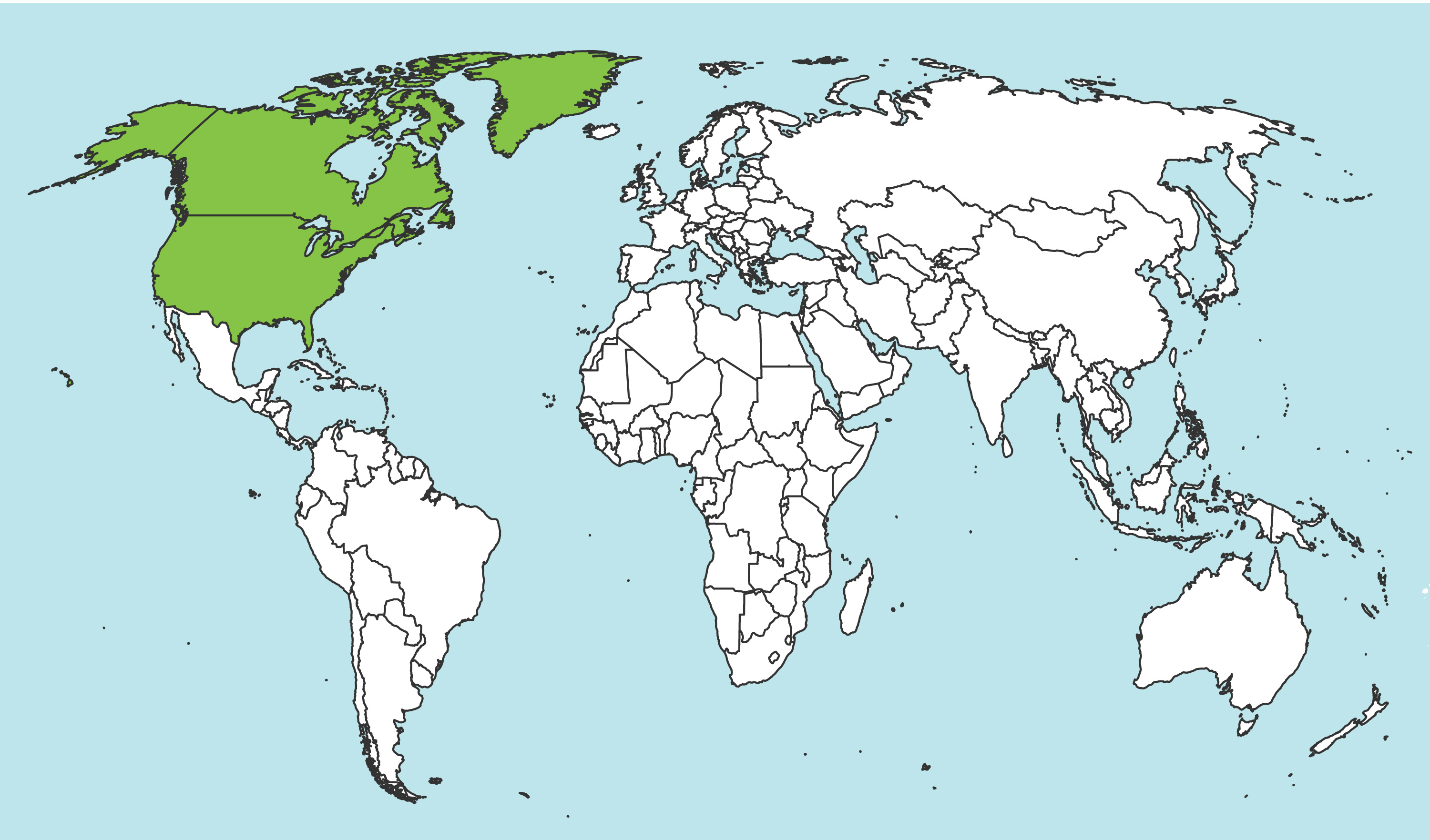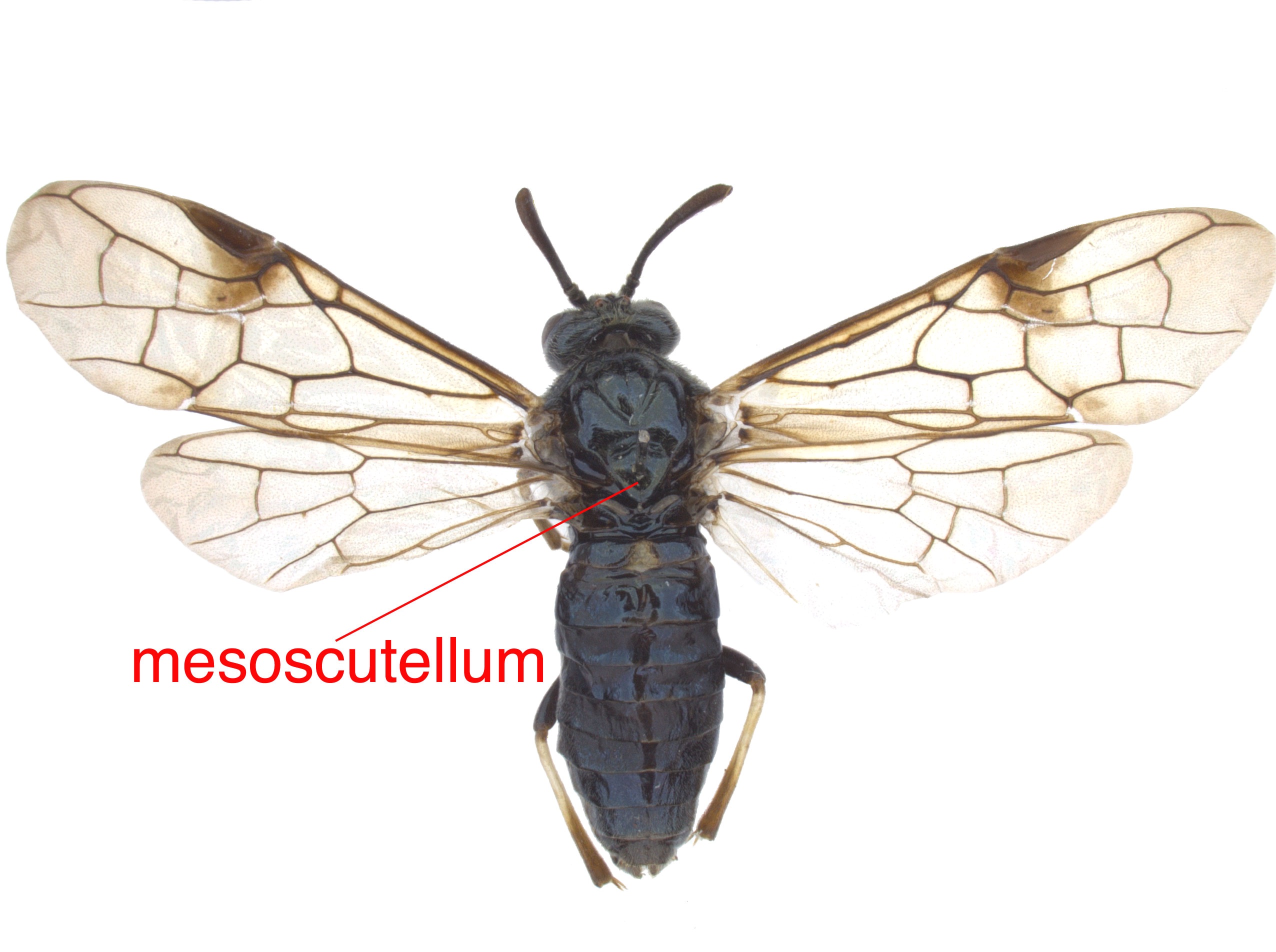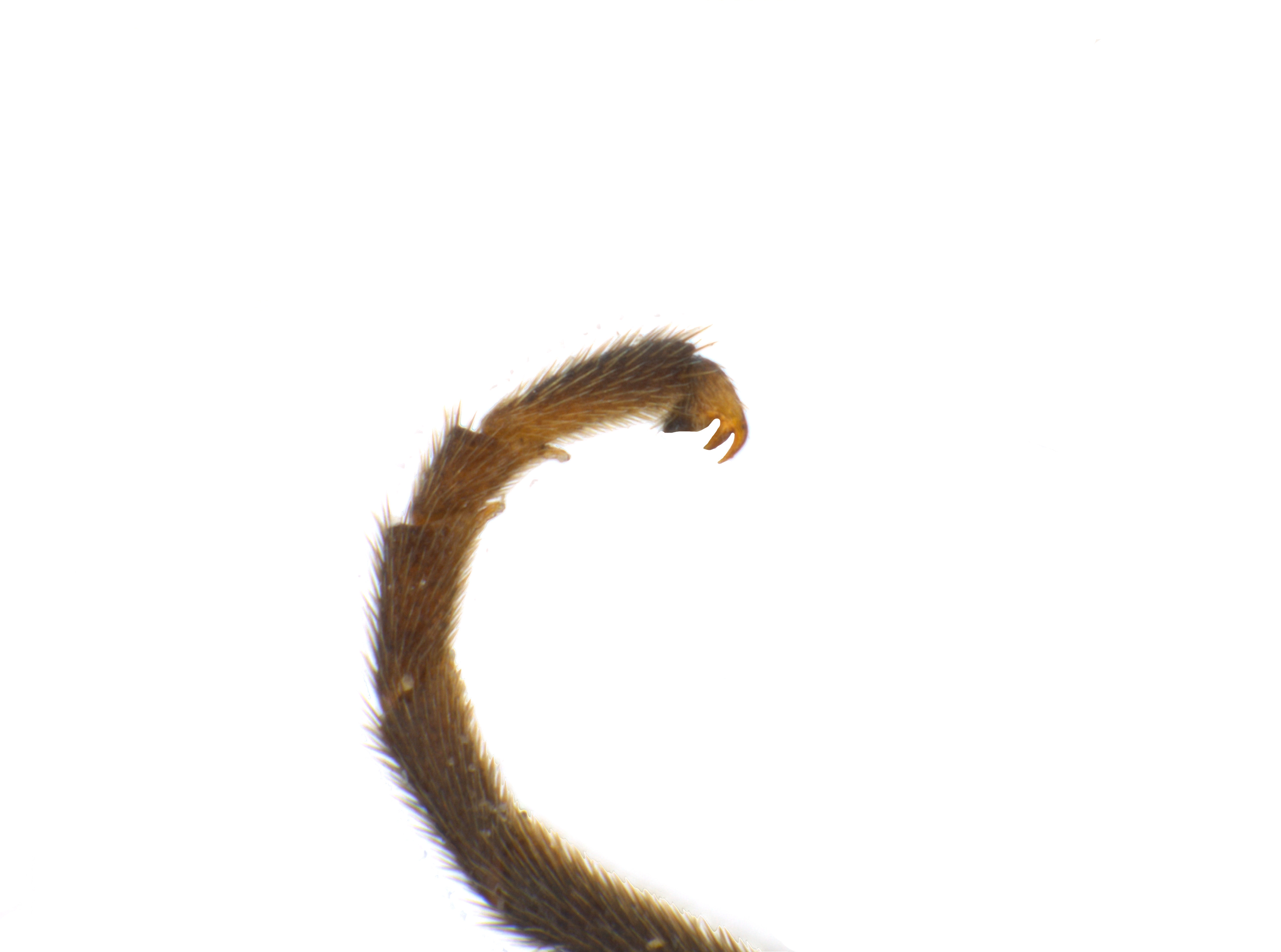Family: Tenthredinidae
Family common name: common sawflies
Subfamily: Allantinae
Tribe: Eriocampini
Genus: Dimorphopteryx Ashmead 1898
Subgenera: none
The Tenthredinidae are the most species-rich family and are found throughout the world, in all continents but Antarctica. They are known as the “common sawflies.” They can generally be recognized by a cylindrical body and long, segmented antennaeantenna:
the sensory organ emerging from the front of the head, usually between the compound eyes and above the clypeus; includes the flagellum, scape and pedicel
 . Otherwise, they come in a variety of colors, sizes, and forms (Goulet 1992Goulet 1992:
. Otherwise, they come in a variety of colors, sizes, and forms (Goulet 1992Goulet 1992:
Goulet H. 1992. The genera and subgenera of the sawflies of Canada and Alaska: Hymenoptera. Symphyta. The insects and arachnids of Canada. Part 20. Agriculture Canada Publication.).
Sawflies in the Allantinae subfamily are mostly black and shining, sometimes with other colors. They have agricultural importance as some species are pests on cultivated and ornamental plants (Smith 1979aSmith 1979a:
Smith DR. 1979a. Nearctic sawflies. IV. Allantinae: Adults and larvae (Hymenoptera: Tenthredinidae). Technical Bulletin, U.S. Department of Agriculture 1595: 1-172.). They can be distinguished from other subfamilies by wing venationvenation:
the network of veins on a wing
(Smith 2003aSmith 2003a:
Smith DR. 2003a. A Synopsis of the sawflies (Hymenoptera: Symphyta) of America south of the United States: Tenthredinidae (Allantinae). Journal of Hymenoptera Research 12 (1): 148-192.).
Dimorphopteryx are medium-sized, about 6–8 mm in length. All North American species are mostly black with orange on parts of the thoraxthorax:
the second and middle segment of the body, between the head and abdomen
 and legs, and have long, laterally flattened antennaeantenna:
and legs, and have long, laterally flattened antennaeantenna:
the sensory organ emerging from the front of the head, usually between the compound eyes and above the clypeus; includes the flagellum, scape and pedicel
 (Smith 1979aSmith 1979a:
(Smith 1979aSmith 1979a:
Smith DR. 1979a. Nearctic sawflies. IV. Allantinae: Adults and larvae (Hymenoptera: Tenthredinidae). Technical Bulletin, U.S. Department of Agriculture 1595: 1-172.).
There are five described extantextant:
in existence; opposite of extinct
species worldwide, and all are NearcticNearctic:
describing the region of the Northern Hemisphere that includes North America south through northern Mexico
 (Taeger et al. 2010Taeger et al. 2010:
(Taeger et al. 2010Taeger et al. 2010:
Taeger A, Blank SM, and Liston AD. 2010. World Catalog of Symphyta (Hymenoptera). Zootaxa 2580: 1-1064.).
A NearcticNearctic:
describing the region of the Northern Hemisphere that includes North America south through northern Mexico
 key to species is included in Smith 1979aSmith 1979a:
key to species is included in Smith 1979aSmith 1979a:
Smith DR. 1979a. Nearctic sawflies. IV. Allantinae: Adults and larvae (Hymenoptera: Tenthredinidae). Technical Bulletin, U.S. Department of Agriculture 1595: 1-172..
Subfamily characters
 vein M and 1m-cu parallel (Smith 1979aSmith 1979a:
vein M and 1m-cu parallel (Smith 1979aSmith 1979a: vein 2A+3A complete, connected to 1A by crossveincrossvein:
vein 2A+3A complete, connected to 1A by crossveincrossvein:Genus characters
 , and mesoscutellummesoscutellum:
, and mesoscutellummesoscutellum: (Rohwer 1915Rohwer 1915:
(Rohwer 1915Rohwer 1915: (Smith 1979aSmith 1979a:
(Smith 1979aSmith 1979a: widely, deeply notched; circularly emarginated (Smith 1979aSmith 1979a:
widely, deeply notched; circularly emarginated (Smith 1979aSmith 1979a: vein 2r present (Smith 1979aSmith 1979a:
vein 2r present (Smith 1979aSmith 1979a: vein M intersecting Sc+R closely basalbasal:
vein M intersecting Sc+R closely basalbasal: cellcell:
cellcell: M present (Smith 1979aSmith 1979a:
M present (Smith 1979aSmith 1979a: with peripheral veinvein:
with peripheral veinvein: (Smith 1979aSmith 1979a:
(Smith 1979aSmith 1979a: bifidbifid:
bifidbifid: with indistinct basalbasal:
with indistinct basalbasal:Dimorphopteryx can be confused with similar species in the subfamily Allantinae or tribe Eriocampini. It can be distinguished by the flattened antennal segments and peripheral veinvein:
a tube-like, often darkened, structure on the wings
 in the male hind winghind wing:
in the male hind winghind wing:
the posterior wing of each pair of wings
 (Smith 1979aSmith 1979a:
(Smith 1979aSmith 1979a:
Smith DR. 1979a. Nearctic sawflies. IV. Allantinae: Adults and larvae (Hymenoptera: Tenthredinidae). Technical Bulletin, U.S. Department of Agriculture 1595: 1-172.).
none
In North America, Dimorphopteryx feeds on Tilia (linden), Acer (maple), Prunus (cherry), Pyrus (pear), Malus (apple), Amelanchier (serviceberry), Crataegus (hawthorn), Quercus velutina (black oak), Betula papyrifera (paper birch), Betula alleghaniensis (yellow birch), Alnus (alder), and Castanea dentata (American chestnut) (Rohwer 1915Rohwer 1915:
Rohwer SA. 1915. IV. Some Oriental sawflies in the Indian Museum. Records of the Indian Museum 11: 39-53., Smith 1979aSmith 1979a:
Smith DR. 1979a. Nearctic sawflies. IV. Allantinae: Adults and larvae (Hymenoptera: Tenthredinidae). Technical Bulletin, U.S. Department of Agriculture 1595: 1-172., Smith and Middlekauff 1987Smith and Middlekauff 1987:
Smith DR and Middlekauff WW. 1987. Suborder Symphyta. In: Stehr FW ed. Immature Insects. Kendall/Hunt Publishing Company. Vol. 1: 754 pp.).
The female Dimorphopteryx lays eggs into the upper side of the leaf of the host plant. LarvaeLarva:
the immature stage of holometabolous insects
 are sometimes green, sometimes reddish, wide and slightly flattened like a slug, dull, and finely textured. The young larvaelarva:
are sometimes green, sometimes reddish, wide and slightly flattened like a slug, dull, and finely textured. The young larvaelarva:
the immature stage of holometabolous insects
 feed singly on the upper cuticle and parenchymaparenchyma:
feed singly on the upper cuticle and parenchymaparenchyma:
in plants, the soft, thin-walled, inner tissue that performs functions such as photosynthesis, storage, and secretion; as opposed to dermal and vascular tissues
of the leaf and transition to eating the entire leaf as they mature. At maturity they drop to the ground and build cocoons with dirt and sand, where they overwinter. Adults emerge in early summer. Described species of Dimporphopteryx are univoltineunivoltine:
describing an insect with a life cycle of one generation per year
(Middleton 1915Middleton 1915:
Middleton W. 1915. Notes on some sawfly larvae belonging to the genus Dimorphopteryx . Proceedings of the Entomological Society of Washington 48 (2083): 497-501.).
World: This genus is known only from North America (Taeger et al. 2010Taeger et al. 2010:
Taeger A, Blank SM, and Liston AD. 2010. World Catalog of Symphyta (Hymenoptera). Zootaxa 2580: 1-1064.).
North America: Dimorphopteryx species occur in the eastern and midwestern United States and Canada, from New England and Quebec south to Tennessee, and as far west as the Rocky Mountains (Rohwer 1915Rohwer 1915:
Rohwer SA. 1915. IV. Some Oriental sawflies in the Indian Museum. Records of the Indian Museum 11: 39-53., Smith 1979aSmith 1979a:
Smith DR. 1979a. Nearctic sawflies. IV. Allantinae: Adults and larvae (Hymenoptera: Tenthredinidae). Technical Bulletin, U.S. Department of Agriculture 1595: 1-172.).
Map data from: GBIF.org (29 October 2019) GBIF Occurrence Download Dimorphopteryx
Details about data used for maps can be found here.